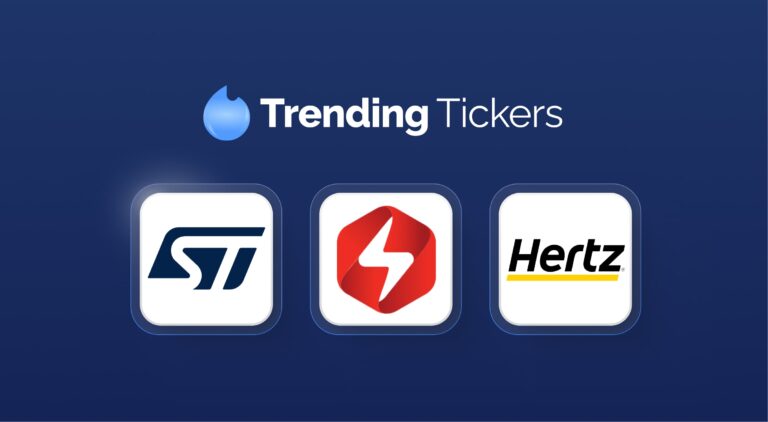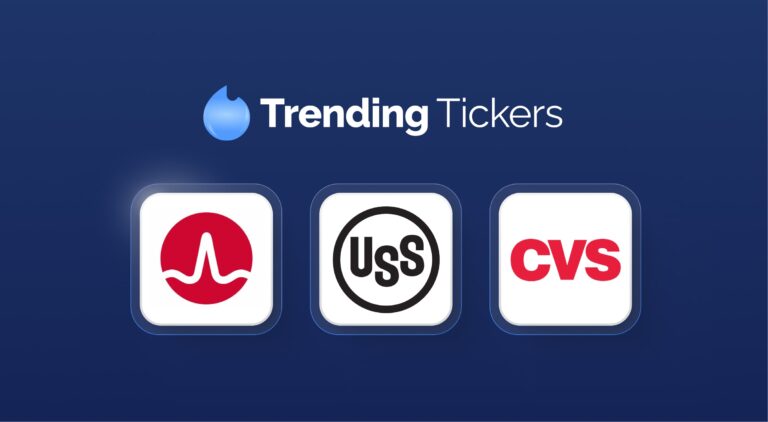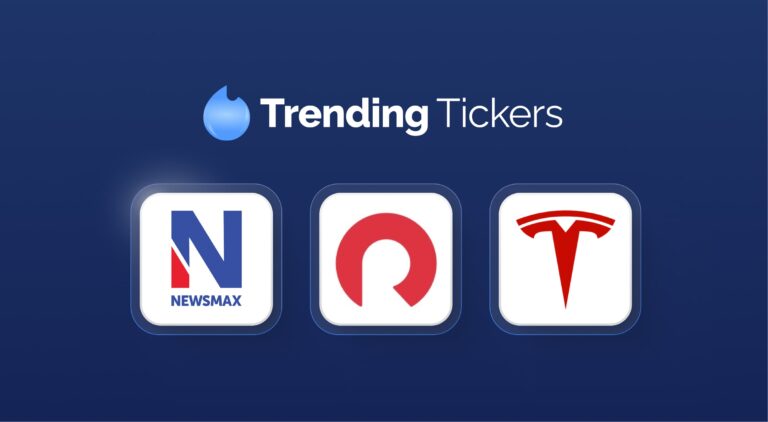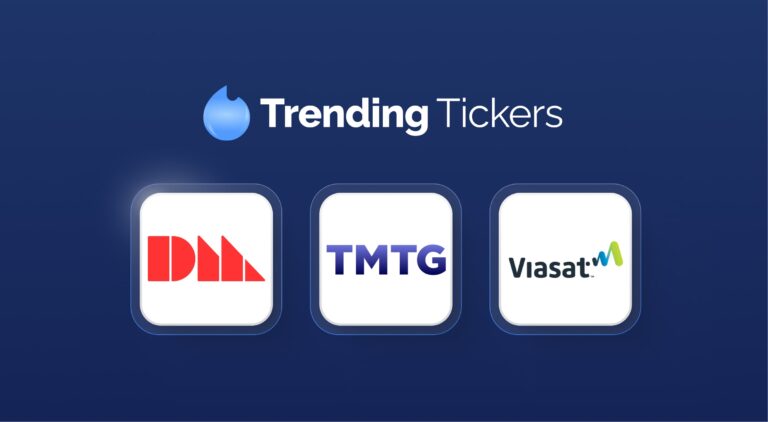S&P 500: The Winners and Losers of March 2025
After a strong start to the year—gaining 2.7% in January—the S&P 500 turned negative in the following months. February posted a modest decline of 1.4%, but March saw a much steeper drop of 5.75%. Out of the 500 index constituents, 349 ended March in the red, while the remaining stocks managed to post gains. In this article, we break down the top winners and losers in the S&P 500 for March 2025 and examine the key drivers behind their stock movements.
Top S&P 500 Performers in March
Among the top performers were Dollar General ($DG), Huntington Ingalls Industries ($HII) and The Mosaic Company ($MOS), Here’s a closer look at why each of these stocks stood out:
Dollar General ($DG) +18.54%
Dollar General, a major U.S. discount retailer serving predominantly low-to-middle-income shoppers, rallied nearly 19% in March 2025. The surge followed stronger-than-expected Q4 FY2024 results reported on March 13, which eased concerns about a prolonged downturn. Same-store sales rose 1.2%, and EPS of $1.68 beat forecasts of $1.50. Management credited efforts like store remodeling and tighter inventory control for the improved performance.
The earnings surprise marked a potential turning point for the stock, which had fallen nearly 70% over the previous two years. CEO Todd Vasos, who returned in 2023, appears to be making progress on his turnaround strategy. The closure of 96 underperforming stores in Q4 was seen by analysts as a broader shift toward improving operational efficiency and profitability. While FY2025 guidance was conservative, Dollar General’s appeal as a defensive play in a challenging economic environment helped fuel investor optimism. As high inflation pressures low-income consumers, discount retailers like DG are benefiting from renewed shopper interest—helping drive the stock’s strong March rally.
Huntington Ingalls Industries ($HII) +16.21%
Huntington Ingalls Industries, the largest U.S. military shipbuilder known for its aircraft carriers and destroyers, jumped more than 16% in March. The rally was largely driven by major government policy announcements. In early March, former President Donald Trump unveiled plans to boost the American shipbuilding industry, including the creation of a White House Office of Shipbuilding and potential tariffs on Chinese-built vessels entering U.S. ports.
Investors quickly identified HII as a direct beneficiary of this strategy. The announcement signaled the potential for increased domestic shipbuilding contracts and government investment, particularly in companies already supplying the Navy. The broader defense sector also saw gains in anticipation of higher military spending, but HII outperformed due to its clear alignment with the policy shift. The rally reversed losses from a weak February earnings report, and investors rotated into the stock as expectations rose for a long-term boost to shipbuilding demand tied to trade and industrial policy.
Adding to the bullish momentum, HII’s Mission Technologies division announced on March 13 that it had been awarded a five-year, $182 million task order to support F-16 pilot training devices for the U.S. Air Force. Under the contract, HII and subcontractor Trident Military Systems will provide engineering maintenance and logistics for the Mission Tactics Trainer systems used by the Air National Guard, Air Force Reserve, and Navy.
The Mosaic Company ($MOS) +12.92%
The Mosaic Company, one of the world’s largest producers of phosphate and potash fertilizers, gained nearly 13% in March as upbeat guidance and favorable market trends lifted investor sentiment. At its 2025 Investor Day on March 18, Mosaic projected adjusted EBITDA of up to $3.5 billion by 2030. The company also announced a $150 million cost-cutting program and plans to monetize non-core assets, signaling a renewed focus on improving margins and long-term growth.
The detailed forward guidance reassured investors after a disappointing February, when the stock slipped following weaker short-term outlooks. Mosaic benefited from improving fundamentals in global fertilizer markets. Rising grain demand, tighter crop supplies, and stabilizing potash and phosphate prices helped reinforce the company’s growth story. Combined with stronger pricing power in early 2025 and positive sector dynamics, these factors pushed MOS to double-digit gains for the month.
Worst S&P 500 Performers in February
Among the top losers in the S&P 500 for March 2025 were Delta Air Lines (DAL), United Airlines (UAL), and Teradyne (TER). Each faced mounting pressures—ranging from severe earnings guidance cuts and weakening travel demand to trade-policy-related uncertainty—that drove sharp declines in their stock prices. Here’s a closer look at the key factors behind their underperformance.
Delta Air Lines ($DAL) -27.48%
Delta Air Lines, one of the largest U.S. carriers with a strong presence in both domestic and international travel, saw its stock tumble over 27% in March. The sharp decline was triggered by a major guidance cut on March 10, when the company slashed its Q1 2025 adjusted earnings forecast to $0.30–$0.50 per share—roughly half its prior guidance of $0.70–$1.00. The profit warning, issued at an investor conference and later reiterated publicly, caught analysts off guard. CEO Ed Bastian pointed to weakening demand, noting a pullback in corporate travel and hesitancy from leisure customers: “Consumers in a discretionary business do not like uncertainty.”
The immediate reaction was severe, with shares falling about 14% on the day of the announcement. The slide continued as March progressed, leaving DAL down nearly 30% from February levels. Investors were spooked by the guidance revision and downbeat commentary, which signaled weaker forward bookings and declining margins—key metrics for airline valuations.
The macroeconomic backdrop further intensified the sell-off. Bastian explicitly cited U.S. economic uncertainty, inflation, and tariffs as factors weakening consumer and business confidence. Reports of declining corporate travel, rising fears of a potential recession, and budget cuts across federal agencies created a perfect storm. In essence, Delta’s March collapse reflected a negative feedback loop: a company-specific earnings downgrade compounded by broader economic pressures, leading to a near 27% drop that placed DAL among the S&P’s worst performers.
United Airlines Holdings ($UAL) -26.39%
United Airlines’ stock followed Delta’s decline in March, as the airline issued a guidance update signaling that the industry’s optimism for early 2025 was misplaced. After Delta’s warning, United adjusted its Q1 earnings forecast to the lower end of its previous range. The airline cited a “sharp slowdown in revenue” in late February and March, particularly on routes relying on government and corporate travel. Notably, United revealed a 50% drop in government-related travel bookings, reflecting a significant reduction in travel from federal agencies.
The update came during the JPMorgan industry conference on March 11, where United’s CEO and other executives candidly discussed the demand challenges facing the industry. Investors interpreted this as confirmation that the slowdown was not unique to Delta but was affecting the entire airline sector. As a result, United’s stock fell approximately 26% in March, closely mirroring Delta’s decline. The company’s guidance revision and the broader demand slowdown were the primary drivers behind the stock’s poor performance.
Teradyne Inc. ($TER) -24.81%
Teradyne, a supplier of semiconductor testing equipment, saw its stock plummet nearly 25% in March after the company issued a warning about a slowdown in demand due to escalating trade tensions. On March 11, Teradyne revised its revenue outlook for Q2 2025, forecasting flat to down 10% sequentially, and lowered its full-year growth expectations. The company attributed the cautious outlook to the potential impact of new U.S. trade policies, particularly tariffs and export restrictions on China, which could delay orders or reduce demand from electronics manufacturers.
The announcement, made during an investor presentation, was not related to a current earnings miss but was a forward-looking caution based on geopolitical factors. Despite this, investors reacted swiftly, sending Teradyne’s stock down by 17% on the day of the announcement, making it one of the biggest decliners in the S&P 500. The warning highlighted how the broader semiconductor sector was being affected by U.S.–China trade tensions, spooking investors and raising concerns about a slowdown in semiconductor capital spending.
Teradyne’s decline came against the backdrop of growing concerns about a slowdown in the tech sector due to the ongoing trade war.
This article is for informational purposes only and is not investment advice or a solicitation to buy or sell securities. The content is based on publicly available information and reflects the author’s opinions as of the publication date, which may change without notice. All investments carry inherent risks, including the potential loss of principal, and past performance is not indicative of future results. Readers should conduct their own research or consult a financial advisor before making investment decisions. BBAE holds no position in the securities mentioned, nor are they compensated by the companies mentioned.














